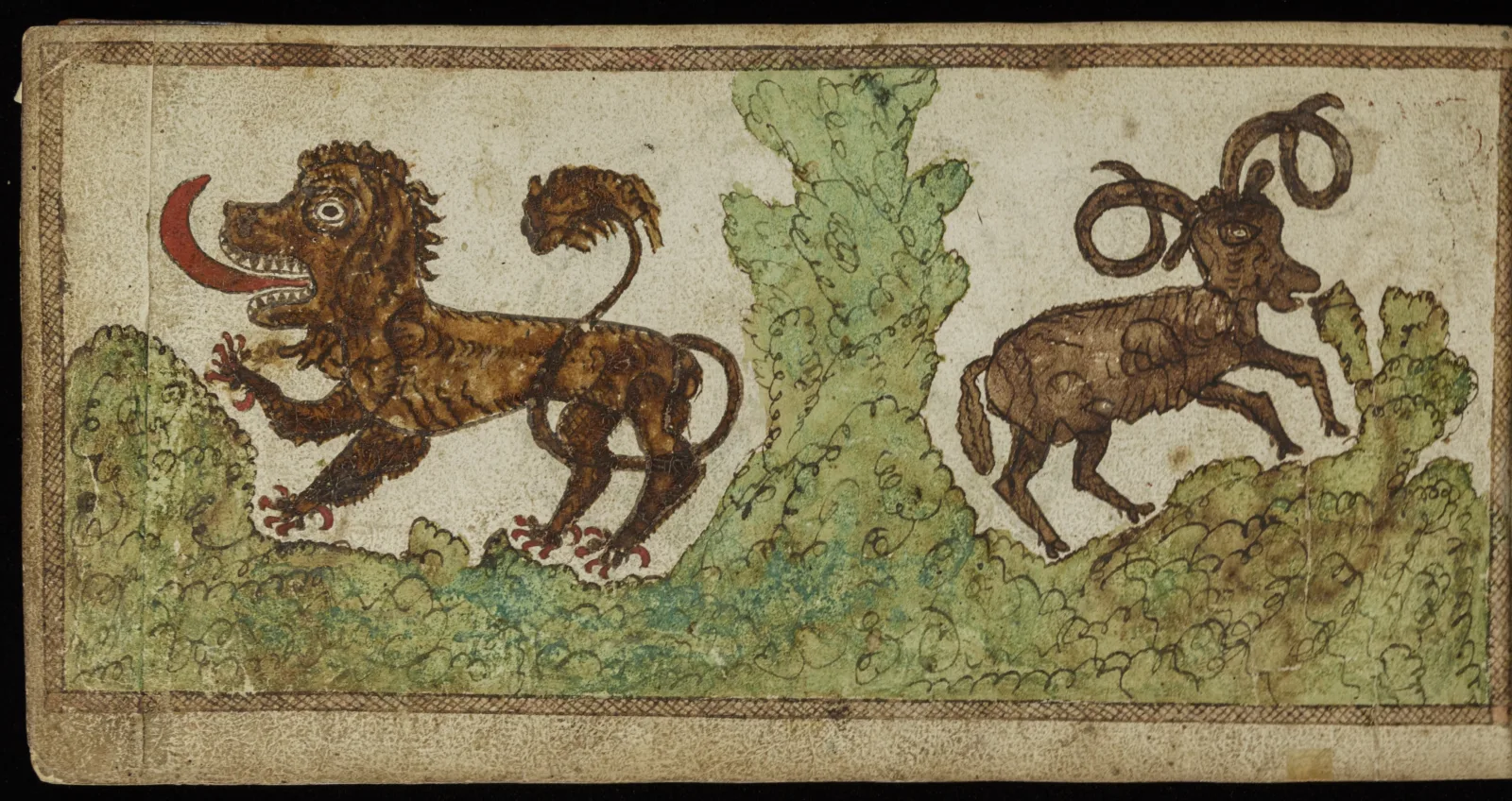What’s the fun of working in a research library if you don’t occasionally stumble across a long-lost tome or some forgotten lore? And even better when the book in question involves a harrowing tale of death, the devil, and—yes—cute woodland critters!
The ‘Emblem Book of Georg Fuhriman’ (Wing MS ZW 647 .F952) is a remarkable late-17th century manuscript that documents the religious experiences of its maker, a resident of Schwanden in Bern Canton, Switzerland. Containing 115 leaves and divided into four parts, Fuhriman’s book varies between meditations on spiritual texts, illustrations of allegories and parables, and narrations on the author’s life. What emerges is a charming insight into religion, life, and death in early modern rural Switzerland.
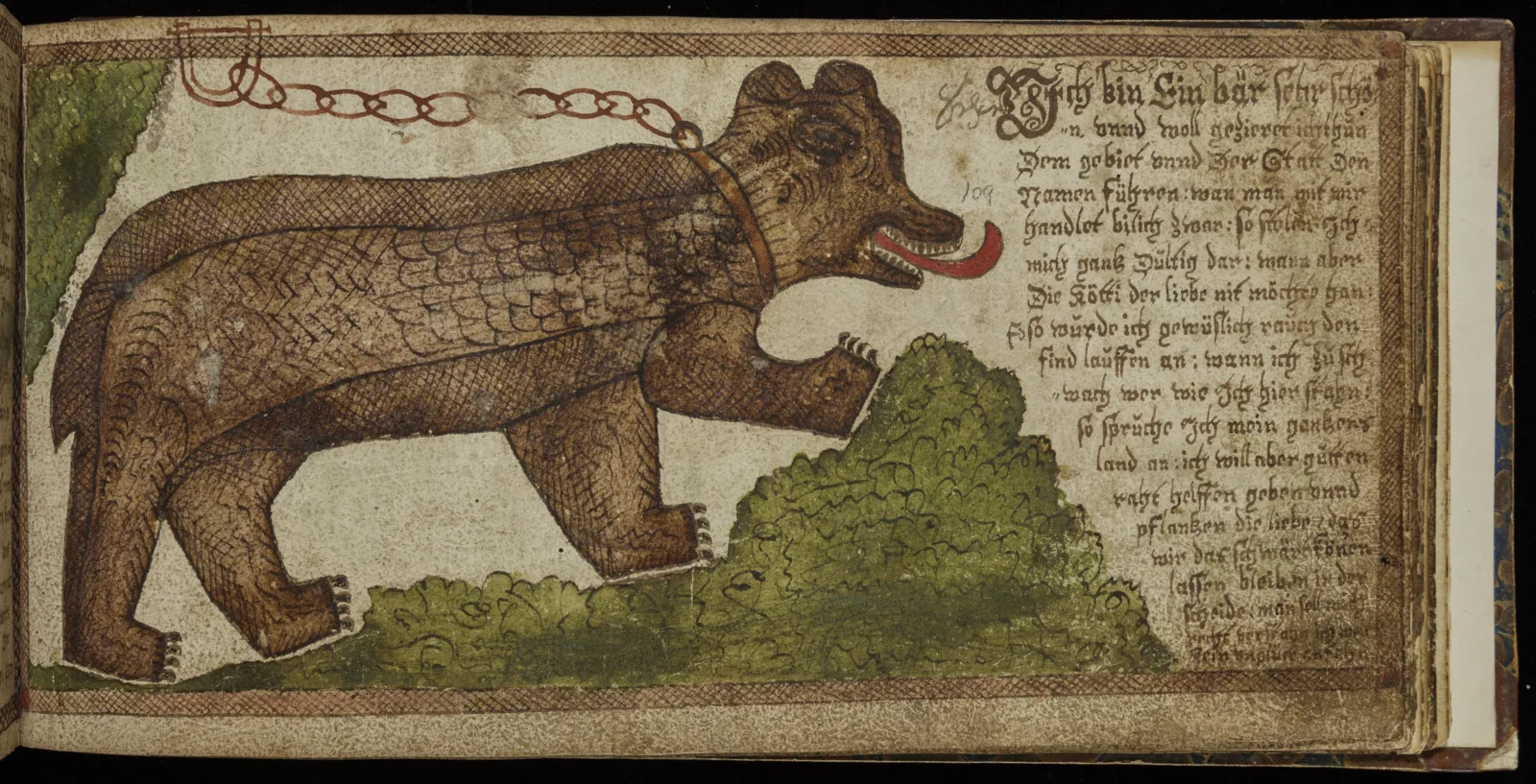
Little is known of Georg Fuhriman himself. He begs readers to “remember that I am not educated or learned, and consider me with low regard. For this is the usual way of writing for a simple person.” Yet despite his humility and idiosyncratic German, Georg was evidently quite well-read. Throughout the manuscript, Georg mentions an array of printed texts and images, hinting at a sizeable collection of books in his home library. And he not only references these texts—rather, he actively transcribes entire chapters alongside pen-and-ink translations of their accompanying prints. What emerges is a celebration of the words and images accessible through popular print culture. Indeed, Georg spends a full page celebrating Gutenberg’s invention of the printing press. The “much-praised art of printing,” he writes, meant that “precious treasures of written knowledge, hidden for a long time in the depths of ignorance, were greatly expanded and brought to light.”
Yet what inspired Georg Fuhriman to create such a richly illustrated book in the first place? According to the author, it was a “dream [that] will astonish me for the rest of my life.” In the year 1678, Georg recounts, he was on his way to church when a great chill paralyzed him. After struggling back to bed, Georg spent months incapacitated. Ever the optimist (and bibliophile), he ponders that “if I had not had a few good books with me, I would have been in extreme anguish.” Yet one night, he “fell asleep in an instant, causing the book that I was holding to fall from my hands, and I was completely overtaken by sleep.” It was in this sudden slumber that a mysterious figure approached Georg’s bed.
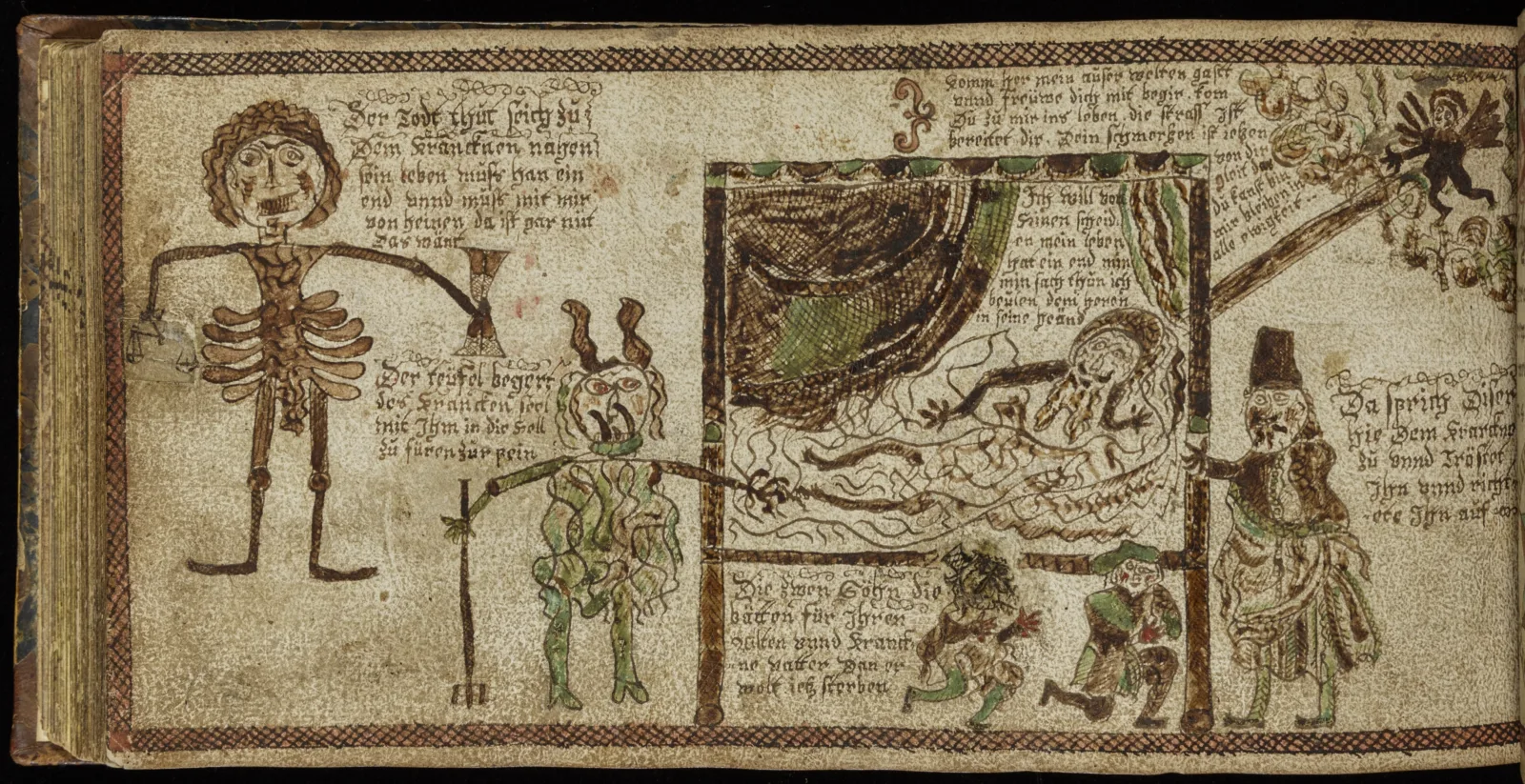
The stranger, dressed all in white with pale skin, pale beard, and eyes “like a burning flame,” sat upon Georg’s bed. Considering Georg in his sorry state, the figure noted, “You are lying here in great distress … if you follow my words and place your trust in me, you will be helped immediately.” At this, the pale figure offered Georg a pitcher of water. He continued, “I will give this to you to drink, and it will help you.” After some silence, the figure became impatient: “I desire an answer.” Georg, in his piety, finally replied, “My trust is in God the Lord, who has laid me here. I will wait for His help, whether it results in salvation or death. I place my trust in no one else.” At this, “the man’s face changed, and he looked at me with fiery red eyes, as if he were angry. His eyes were not clear but burned like embers.” Finally, he turned and left the room. Suddenly, Georg “heard a loud scream” and awoke, remembering everything that had transpired in the dream and writing it down immediately.
What do we make of this remarkable, terrifying vision? Harrowing Christian visionary experiences—even those of laypeople—had been recorded for centuries, and Georg’s devil dream seems to fall within this long tradition. More so, the vision and Georg’s manuscript as a whole reflect an increasing Protestant focus on an individual’s piety in the heart and home. This movement—aptly termed ‘pietism’—highlighted the role of the individual’s personal, emotional experience of the divine. What illustrates this home-centered piety more than Georg’s illustration of the visionary scene in his distinctive folk style?
Though Georg’s experience was highly unique, we can perhaps place his vision, manuscript, and folk style into a more global perspective. 4,000 miles away and a century later, Ludwig Denig, a German-speaking shoemaker in Lancaster, Pennsylvania, recorded his own spiritual experiences in a manuscript “Picture-Bible” that today is located at the Winterthur Museum, Garden, and Library in Delaware. Remarkably similarly in style and content to Georg’s Emblem Book, Denig’s manuscript similarly drew from printed texts and images in translating biblical scenes alongside those from own life in colonial North America. Across the German-speaking world of the early modern period, it seems, humble laypeople drew from printed sources to craft and record their personal religious experiences.
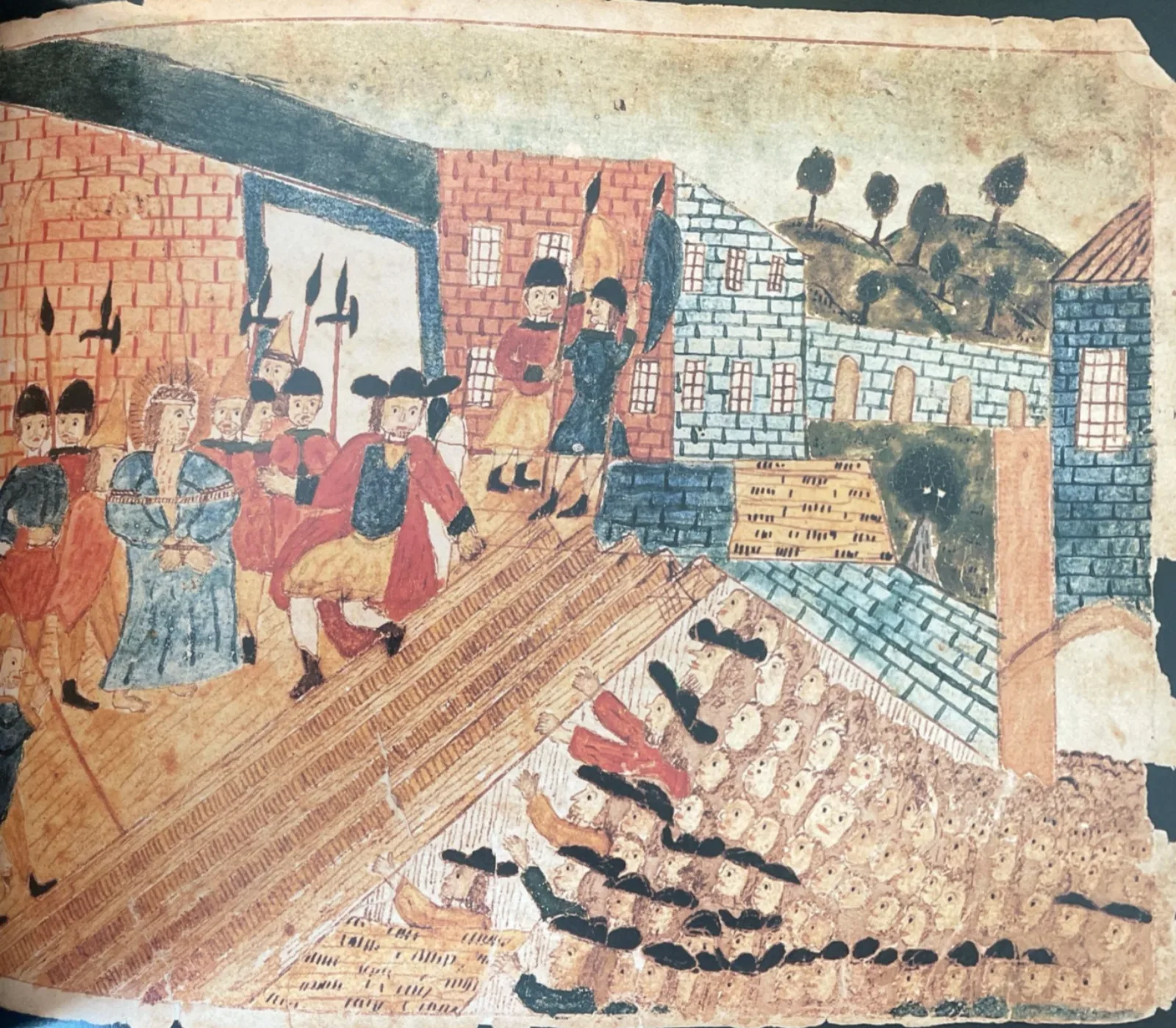
While we might seek to impose this overarching global outlook, humble Georg’s focus was always on his own soul and those of his readers—so much so that, at the conclusion of his book, he even includes a self-portrait as he finishes his manuscript! Beseeching God, Georg begs him to “grant your Holy Spirit to those who read the words in this book, that they might find benefit in it and that it might serve for the salvation and happiness of their souls.” Over 300 years later, our souls certainly still find happiness in this charming book. Thanks, Georg!
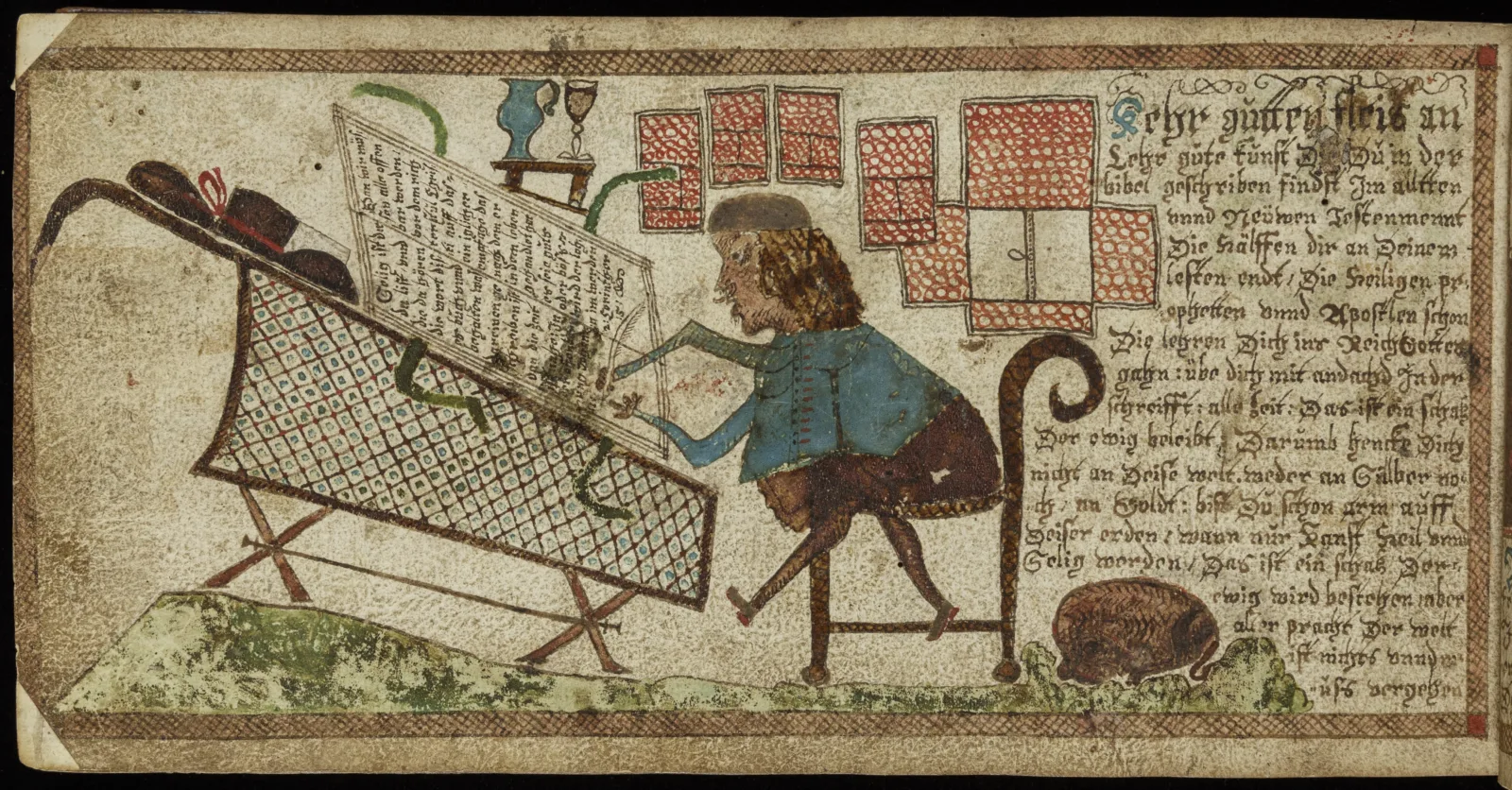
About the Author
Trevor Brandt, a Ph.D. student at the University of Chicago, has been working with Suzanne Karr Schmidt to survey the Newberry's German manuscript materials.
